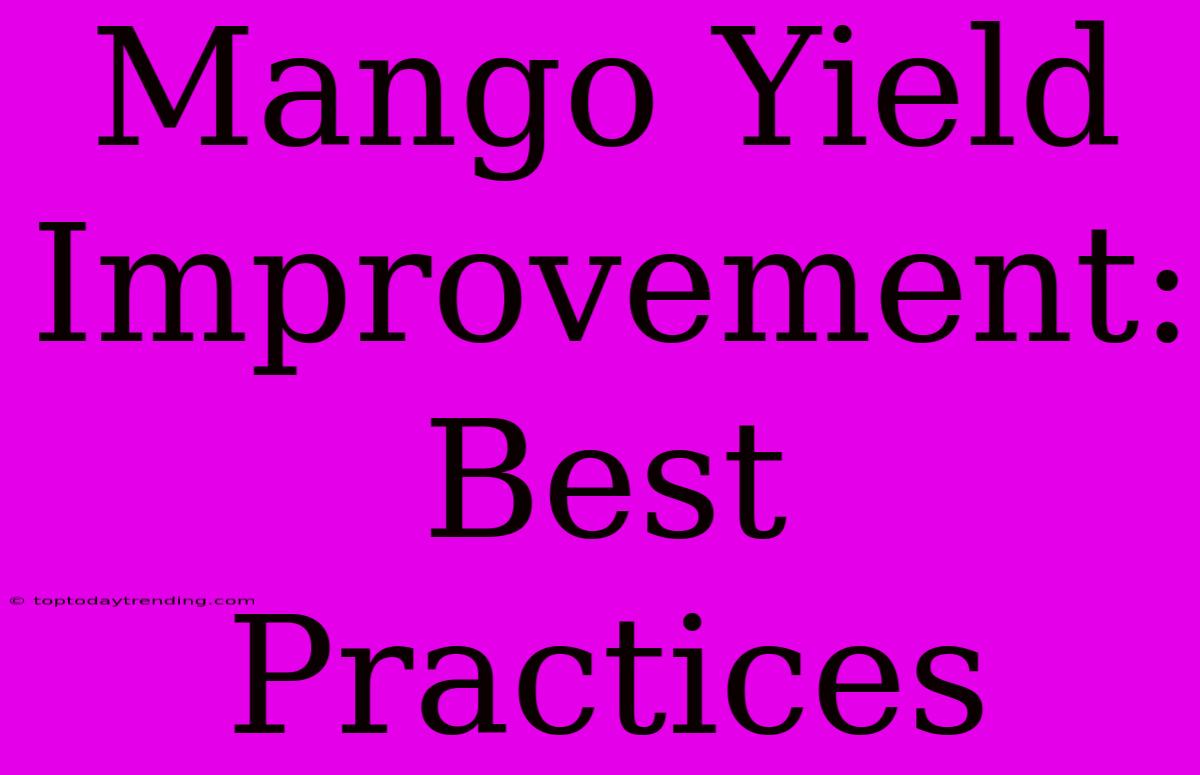Mango Yield Improvement: Best Practices
Mango trees are a popular choice for fruit production due to their delicious fruit and ease of maintenance. But, to get the most out of your mango trees and achieve a bountiful harvest, implementing best practices for yield improvement is key.
Here's a comprehensive guide on how to boost your mango yield:
1. Proper Planting and Selection
A. Choose the Right Variety: Mango varieties vary in their yield potential, fruit size, and disease resistance. Research and select a variety that suits your climate and soil conditions while considering your desired market.
B. Planting Time and Spacing: The best time to plant mango trees is during the rainy season, allowing for better establishment. Ensure sufficient spacing between trees to allow for proper growth and sunlight penetration.
C. Soil Preparation: Well-drained, fertile soil is essential for healthy mango trees. Before planting, amend the soil with organic matter and nutrients.
2. Irrigation and Nutrition
A. Regular Watering: Mango trees require consistent watering, especially during the flowering and fruiting stages.
B. Fertilization: Provide balanced fertilization with a focus on nitrogen, phosphorus, and potassium. Conduct soil testing to determine specific nutrient needs.
C. Mulching: Mulching around the base of the tree helps conserve moisture and suppresses weeds.
3. Pruning for Growth and Fruiting
A. Regular Pruning: Pruning helps maintain the shape of the tree, encourage new growth, and improve air circulation.
B. Remove Dead and Diseased Branches: Removing dead or diseased branches prevents the spread of pests and diseases.
C. Thinning Fruit: This involves removing excess fruit to allow remaining fruit to grow larger and healthier.
4. Pest and Disease Management
A. Integrated Pest Management: Use a combination of cultural, biological, and chemical controls to manage pests.
B. Disease Prevention: Practices like sanitation and proper pruning can prevent the spread of diseases.
C. Monitor for Early Signs: Regular inspection of trees for signs of pests and diseases is crucial for early detection and intervention.
5. Pollination and Fruit Set
A. Pollinator Attraction: Mango trees are generally self-pollinating, but attracting pollinators like bees can increase pollination efficiency.
B. Fruit Setting: Provide adequate nutrients and moisture during fruit development to ensure proper fruit setting and growth.
6. Harvesting and Post-Harvest Management
A. Timing of Harvest: Harvest mangoes when they reach optimal maturity, as indicated by color changes, aroma, and firmness.
B. Proper Handling: Handle mangoes carefully during harvesting and transportation to prevent bruising and damage.
C. Storage: Store mangoes in a cool, dry, and well-ventilated place to extend their shelf life.
7. Conclusion
Implementing these best practices will help you optimize your mango yield and achieve a successful harvest. By providing proper care and attention, you can enjoy a plentiful supply of delicious mangoes year after year. Remember, consistent monitoring, and adapting to your specific environment are crucial for successful mango cultivation.

